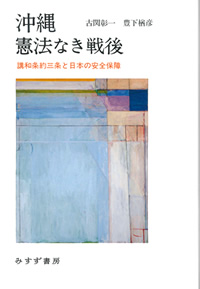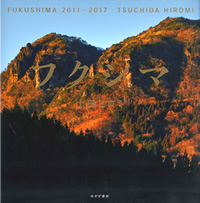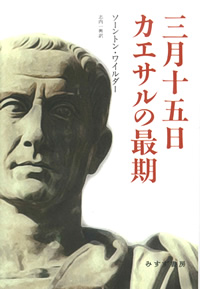
2018.02.07
当時、日本政府は「憲法の適用はない」と明言した
古関彰一・豊下楢彦『沖縄 憲法なき戦後――講和条約三条と日本の安全保障』[9日刊]
土田ヒロミ『フクシマ 2011-2017』
2018.01.26
土田ヒロミは震災後120回、福島に通い続けた。写真集『フクシマ 2011-2017』は、放射能汚染地域の各所を《定点観測》で撮影、5万点のなかから190点を精選した。
「私たちがどれだけのものを失ったのかを知るために、
自然を見直して美しく撮りたかった。
ところが2013年頃から、除染作業によって風景が破壊されていく状況も記録することになった。
美しい山里の風景を撮っていたはずが、突然フレコンバッグの山が立ちはだかる事態になった。
自然と人間の共生の崩壊する悲劇的風景を記録することは、初志とは異なる作業になってしまったが、撮り続けているうちに、未来に向かってレンズを向けているような感覚に襲われたりもした。眼前の風景は10年後、20年後、どのようになっているのだろうか?」(土田ヒロミ)

[Synopsis]
On March 11, 2011, a massive earthquake struck northeastern Japan, triggering an accident comparable to the Chernobyl disaster at the Fukushima Daiichi Nuclear Power Plant, only 260 kilometers north of Tokyo. Thousands of people were forced to evacuate, and their communities were declared unsafe for habitation. This book introduces a series of fixed-point photographs taken in radiation-contaminated areas of Fukushima Prefecture by Hiromi Tsuchida, known worldwide for his work tracing the postwar changes in Hiroshima, a city destroyed by another form of the same nuclear energy that has devastated Fukushima.
The contaminated zones of Fukushima were inhabited by people who had cultivated and coexisted with nature for many generations. The region is a rolling land of rice paddies, pastures, farm ponds, mountainous landscapes out of a sumi-ink painting, rivers and seacoasts rich with fish, and cherry trees that people gathered under in the spring. Still standing are the houses families used to live in, the gardens they tended, their schools, amusement parks, and shopping districts.
After the nuclear accident, people vanished from this landscape and the natural beauty of Fukushima began to undergo a transformation. The decontamination process scraped the topsoil off vast swathes of land to a uniform depth of five centimeters, along with the trees and plants growing there. Because permanent disposal sites have yet to be decided, black container bags full of this waste continue to pile up throughout the area. A bizarre and complex reality persists with no resolution in sight. Tsuchida resorted to the use of drones to film this eerie landscape from above.
This photo collection is a chronicle of the breakdown of the symbiotic relationship between human beings and nature. The scenes it depicts may presage the future of a civilization that has been relentless in its pursuit of material wealth at all costs. Through these artistically stunning photographs one can hear the lament of the land they portray.
The book includes commentaries, maps, and latitude/longitude data on the photographs in both English and Japanese.
[About the Photographer]
Tsuchida Hiromi was born in 1939 in Fukui Prefecture. After graduating from the School of Engineering at the University of Fukui, he worked for POLA Cosmetics, Inc., then resigned to go freelance.
He taught from 1971 to 1996 at the Tokyo College of Photography and from 2000 to 2013 at the Osaka University of Arts, where he continues to teach as a part-time lecturer. He also serves on several exhibition and award selection committees. His photographic work addresses the transformations undergone by Japan in series about Hiroshima, which he has photographed for four decades since 1975, the economic boom and bubble eras, and local festivals and customs. His award-winning books include Autistic Space (1971 Taiyo Award), Hiroshima 1945-1978 (1978 Ina Nobuo Award), Hiroshima (1984 Photographic Society of Japan Award), and Tsuchida Hiromi’s Nippon (2008 Domon Ken Award). Major publications include Zokushin: Gods of the Earth (1976), Counting Grains of Sand (1990), and Berlin (2011). His works are found in the collections of museums worldwide, among them the Tokyo Metropolitan Museum of Photography, The National Museum of Modern Art, Tokyo, The Museum of Modern Art, New York, Pompidou Centre, the National Gallery of Canada, and the Tate Modern.

2018.02.07
古関彰一・豊下楢彦『沖縄 憲法なき戦後――講和条約三条と日本の安全保障』[9日刊]

2018.01.25
ソーントン・ワイルダー『三月十五日 カエサルの最期』志内一興訳